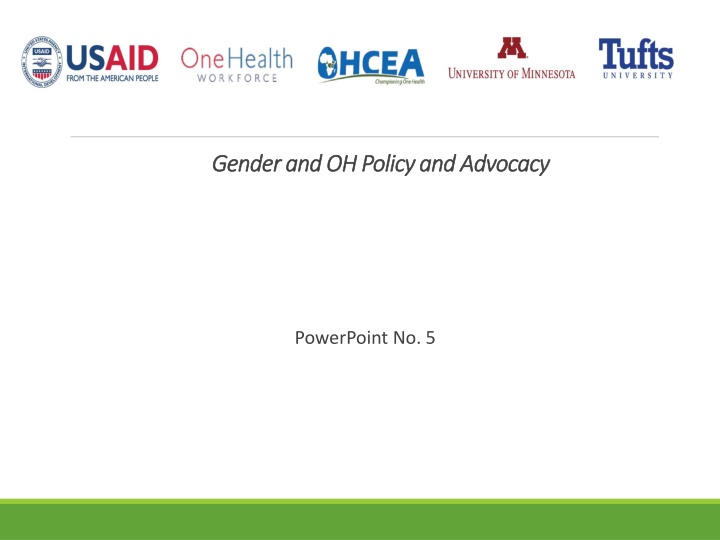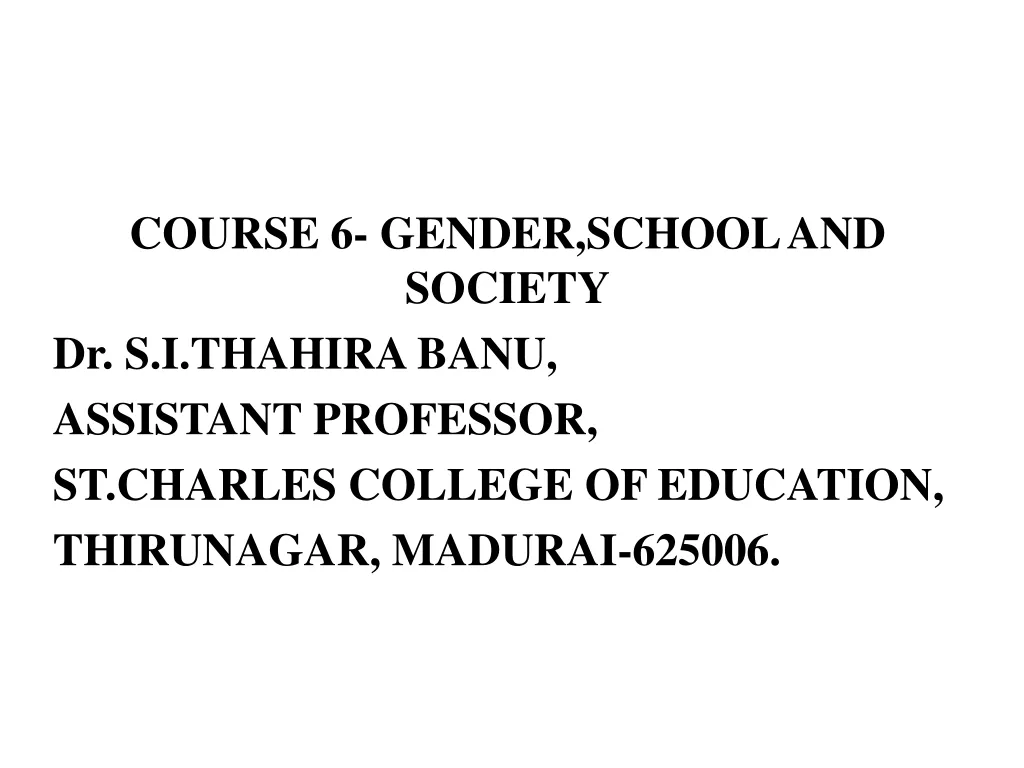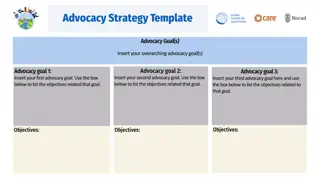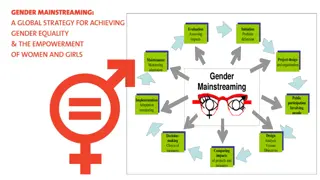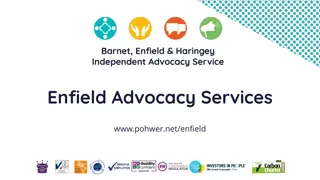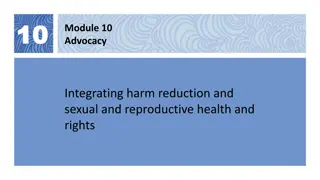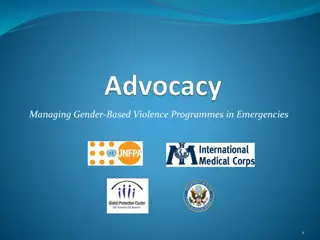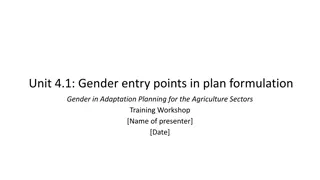Gender and OH Policy and Advocacy
Gender is a culturally shaped construct influencing societal roles and opportunities for men and women. Gender analysis reveals inequalities that necessitate targeted interventions for achieving gender equality and equity, particularly in addressing vulnerability to infectious diseases like Ebola and TB based on gender-related norms and factors.
Download Presentation

Please find below an Image/Link to download the presentation.
The content on the website is provided AS IS for your information and personal use only. It may not be sold, licensed, or shared on other websites without obtaining consent from the author.If you encounter any issues during the download, it is possible that the publisher has removed the file from their server.
You are allowed to download the files provided on this website for personal or commercial use, subject to the condition that they are used lawfully. All files are the property of their respective owners.
The content on the website is provided AS IS for your information and personal use only. It may not be sold, licensed, or shared on other websites without obtaining consent from the author.
E N D
Presentation Transcript
Gender and OH Policy and Advocacy Gender and OH Policy and Advocacy PowerPoint No. 5
What Is Gender? Culturally or socially shaped group of attributes and behavior given to a female or male human being in a given ethnic, tribe or religious setting. Gender is a social-cultural construct. 2
Gender is.. The opportunities, roles, responsibilities, relationships and personal identities a particular society prescribes as proper for men and women. These attributes are socially constructed and learned both individually and collectively. 3
Gender analysis Gender analysis We live in societies that are permeated by gender differences and gender inequalities. There is no country in which the outcomes of public policy are equal for men and women. Dimensions of these inequalities are often so deeply embedded that they are difficult to perceive.
Reveals these differences, and the fact that in such a social context any gender interventions that profess to be gender-neutral will in fact reflect and probably reinforce the imbalances that exist. Gender analysis Required inequalities to the surface and to the attention of people who can make a difference, so that their decisions are taken in a manner that is sensitive to and reflects the outcome of gender analysis. to bring these
Gender equality and gender equity can be addressed by using various approaches, including legislation, organizational processes and information gathering.
How Gender Differences How Gender Differences Influence Emerging Infectious Disease Influence Emerging Infectious Diseases Vulnerability Exposure Response to infection Public health interventions Gender differences vary from country to country Gender differences also vary within countries according to a host of socio- economic variables
Vulnerability to Infectious Diseases Vulnerability to Infectious Diseases First contact Ebola, TB, anthrax Gender related norms Value of males against females Vaccination rates Risk factors: pastoralist communities and cholera outbreak Gender roles and responsibilities Schistosomiasis Guinea worm
Exposure to Pathogens Exposure to Pathogens Occupational exposure Hunters, gatherers, preparing meals Outdoor activities and rabies in Ethiopia Raw milk and TB among the Somali community Caring for sick/dead family members Child care and care takers Exposure in health care setting Exposure to livestock Slaughter and marketing
Response to Infections Response to Infections Prompt treatment Role of culture Access to information Access to resources Use of informal health services Cheaper health care TB treatment in Ethiopia Adherence to treatment MDR TB Time constraints
One Health policy may exacerbate gender inequalities when it fails to address the needs of either men or women, and that health systems must address gender equity. Gender and OH policy and advocacy is important in order to reduce the health gap between men and women and to improve efficiency.
Policy Approaches to Gender Equality in OH Policy Approaches to Gender Equality in OH A range of strategies have been used in various countries to address gender equity. Regulatory approaches Organizational approaches Informational approaches. It is important to note that these approaches might need to be combined to address gender equity goals effectively.
Regulatory Approaches Regulatory Approaches Include legislation designed to counter discrimination, protect human rights and protect patient rights, and laws that require public-sector authorities to address and counter gender inequalities.
Organizational Approaches Organizational Approaches Include gender mainstreaming, gender-related budgeting, gender impact assessments, health-outcome targets and gender tools that facilitate the assessment of evidence relating to gender differences. These approaches use various tools to identify gender equity issues explicitly in fiscal decision-making, in the drawing up and implementation of policy and in policy outcomes.
Informational Approaches Informational Approaches Focus on the need for good information, which is central to effective health stewardship. These include the use of gender sensitive health indicators and gender equity indices.
